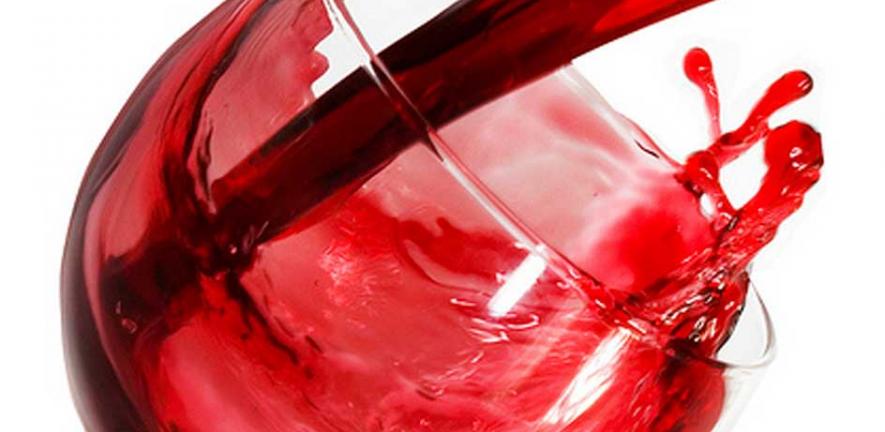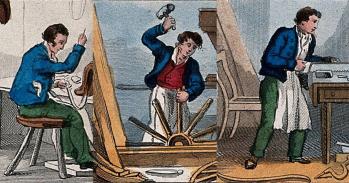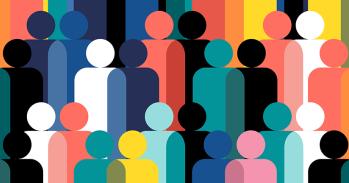
At a lecture tomorrow, Professor Steven Shapin will decant some of the terminology of wine-tasting and look at the ways in which our relationship with wine reflects the way we live and how this has shifted over time. The talk at CRASSH is free and open to all.
At a lecture tomorrow, Professor Steven Shapin will decant some of the terminology of wine-tasting and look at the ways in which our relationship with wine reflects the way we live and how this has shifted over time. The talk at CRASSH is free and open to all.
Wine gives courage and makes men more apt for passion.
Ovid
Wine has its own language. Indeed, each segment of the wine industry has its own vocabulary. In the ABC of wine-tasting terms, A is for aroma. Also known as nose, aroma describes what wine smells like. B is for berry aromas and flavours that are common in wine made from grapes with fruity hints. C is for creamy, one of the terms for the feel of wine in your mouth, the mouthfeel. And so on through the alphabet of sensory experiences.
These terms are just some of the basics. Sommeliers whose taste buds are fine-tuned to wine, as musicians' ears are to music, have dreamed up descriptions that range from mouth-watering (guava, gooseberry) though obscure (wet stones, roasted lilacs) to downright disgusting but not necessarily a bad thing (cat’s pee, farmyard). Wines can be austere, they can be big, they can be connected; curiously, they can be biscuity, chewy or even flabby.
As well as having a language all of its own, wine has its own history, geography and politics – and that’s not to mention its chemistry and the psychology and physiology of our enjoyment of it, or addiction to it. The nature of wine as an organic beverage experienced through the senses means that it’s a commodity defined by subjective descriptors of smell and taste as well as by provenance and an almost mystical set of codes and traditions.
Tomorrow (29 May) Steven Shapin, Franklin L Ford Professor of the History of Sciences at Harvard University, will be at the Centre for Research in the Arts, Humanities and Social Sciences (CRASSH) to talk about The Tastes of Wine: Towards a Cultural History. He comes to CRASSH as ST Lee Professorial Fellow at the School of Advanced Study, University of London.
In what promises to be a fascinating lecture, Professor Shapin will decant for the audience some of the cultural history of wine and our responses to it as buyers, consumers and connoisseurs throughout the passage of time. He will chart how this has shifted in emphasis in terms of the parameters in which it has been framed, from ceremonial and medical to the pure enjoyment of drinking something delicious and mind-altering, and look at what our relationship with wine says about society.
No-one knows when man began to make wine but there is archaeological evidence for wine production as early as 6,000 BC. The world’s earliest known winery is found in a cave high up in the mountains of Armenia, where in 2007 archaeologists found a wine press, fermentation and storage vessels, drinking cups, as well as remnants of grape vines, skins and seeds. The sophistication of this winery, which has been dated to 4,000 BC, suggests that wine making was already well established and that its origins could well be much earlier and likely to be located in regions where grape wines grow wild.
Wine has long been associated with ritual and ceremony. References to wine abound in classical legends, in the Bible, and in many strands of artistic expression. Stunning images of grape-picking, wine-making and wine consumption appear on Greek amphorae, Egyptian freezes and Roman mosaics. Wine was good and wholesome at a time when water was seldom clean. The Greek physician Hippocrates proposed wine as part of a balanced diet and recommended its use as a disinfectant for wounds. Wine is also symbolic. The Christian sacrament of Holy Communion is celebrated by the sharing of bread and wine to represent Christ’s body and blood.
The appeal of wine lies in its power to intoxicate the drinker into a state of jovial well-being and merry forgetfulness. “Wine gives courage and makes men more apt for passion,” wrote the Roman poet Ovid (43 BC–AD 17). “Wine is bottled poetry,” proclaimed Scottish novelist Robert Louis Stevenson (1850–1894). “Wine is constant proof that God loves us and loves to see us happy,” opined founding father of the United Sates, Benjamin Franklin (1706-1790), rather smugly. The downside of too much wine has also been noted throughout the ages. “Wine gives a man nothing... it only puts in motion what had been locked up in frost,” observed Samuel Johnson (1709–1784), essayist and lexicographer. “Wine is a turncoat; first a friend and then an enemy,” quipped Henry Fielding (1707–1754), best known as the author of Tom Jones.
Professor Shapin will also look at the ways in which shifts and trends in wine tastes reflect and embody aspects of wide-ranging social and cultural changes in the ways in which we live our lives. Even in the 1960s and 1970s wine in the UK was revered in many households as something to be kept for a special occasion. Today many people drink wine on a daily basis and it is no longer seen as a drink solely for better-off consumers. The UK is the world’s largest wine importer, receiving shipments of more than 1.5 bn bottles annually. A recent report in the Sunday Times described the transportation of giant plastic bags each holding the equivalent of 32,000 bottles of wine in container ships from Australia and South Africa. These containers are then unloaded on to wine trains which convey the wine from the docks to the bottlers.
Z should not be forgotten. The ABC of wine-tasting terms includes zesty and zippy, both used to describe wines with noticeable acidity. And then in conclusion there's zymology, the science of fermentation, without which wine would not be wine. But that's another story.
The lecture Tastes of Wine: Towards a Cultural History will take place at CRASSH on Tuesday, 29 May, 5.15-7.00pm. The talk will be followed by a wine reception. The event is free and open to all, no need to register. For more information https://www.crassh.cam.ac.uk/.
This work is licensed under a Creative Commons Licence. If you use this content on your site please link back to this page.





